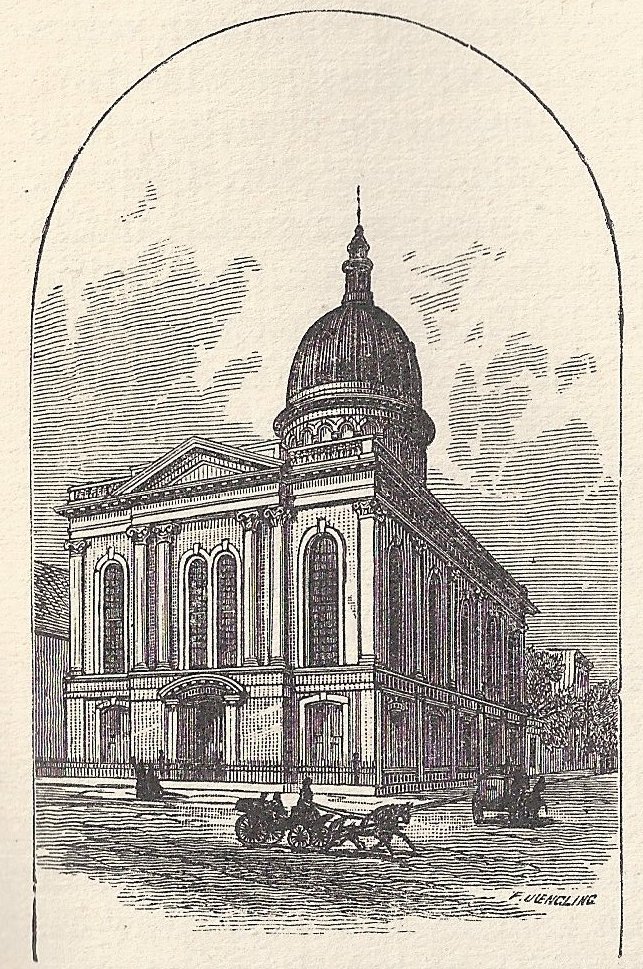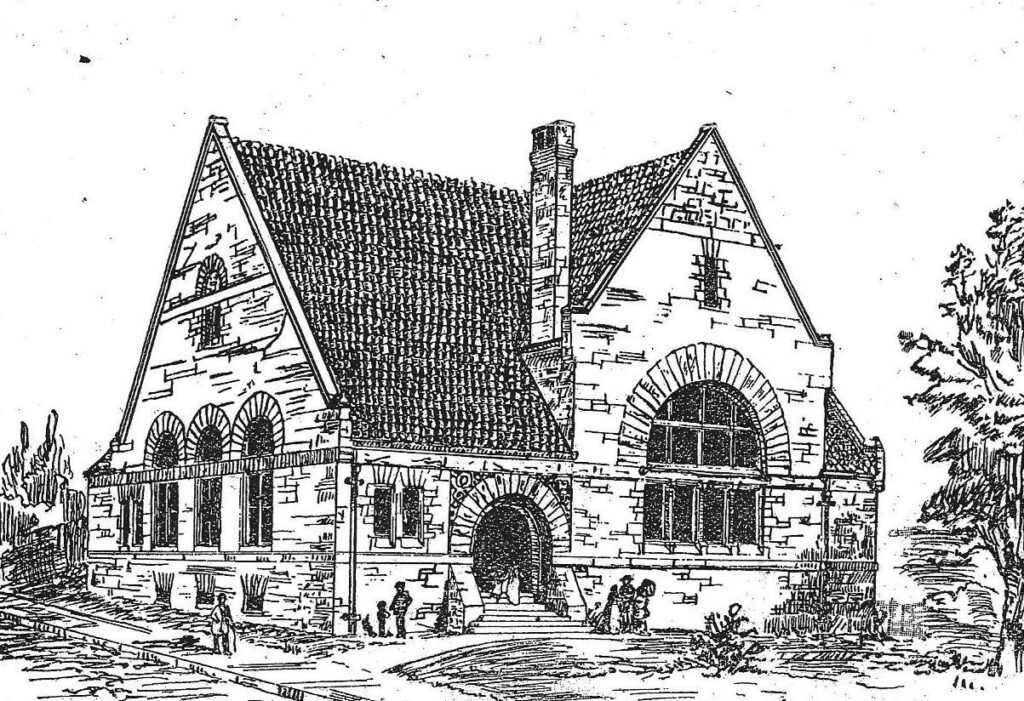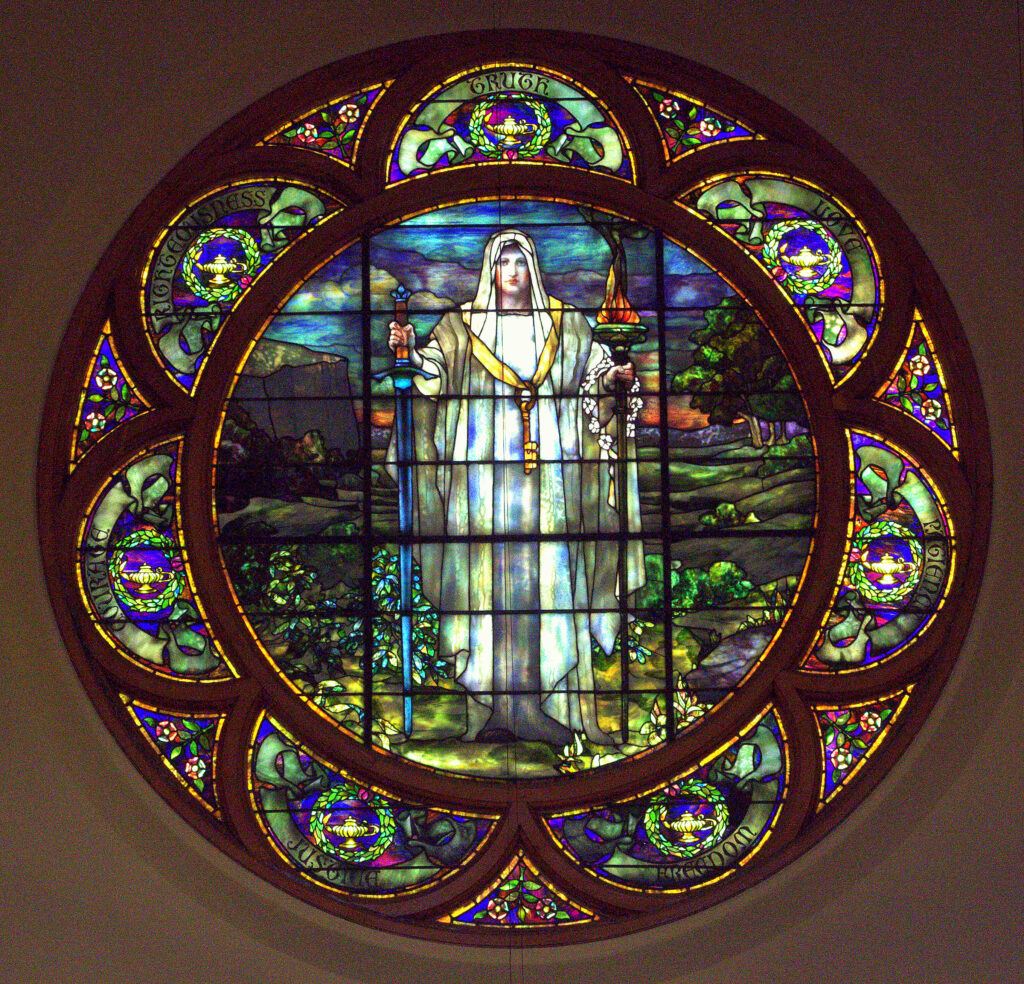Our History
The History of the First Unitarian Church of Cincinnati
By Ed Rider, Archivist, First Unitarian Church of Cincinnati

In 1830, Cincinnati was a bustling economic and cultural center west of the Allegheny mountains. Its population in the forty years since settlers first arrived had grown to 26,500 and included Irish and German immigrants as well as a large number of Easterners. It was a group of these transplanted New Englanders that joined together to form the First Congregational Church of Cincinnati in 1830. Like so many other Congregational Churches in New England, this church was affiliated with the American Unitarian Association. Their first meeting house was a small building on Fourth Street in the heart of the city.
- The Taft Connection
The late Walter Herz, a church member, published “Influence Transcending Mere Numbers,” in the Cincinnati Historical Society’s magazine, Queen City Heritage, in 1993. The article describes a number of early influential First Congregational church ministers and lay persons who were part of the congregation in the church’s first century. Members of First Church exerted a significant impact on the community. Probably the most famous members of the congregation were the Taft Family, including William Howard Taft who grew up in the church and later became President of the United States and Chief Justice of the Supreme Court.
In addition to this article, two other church histories have been published: “The First Congregational Church of Cincinnati (Unitarian), A History” written in 1917 by Minister Emeritus George Thayer and “The First Unitarian Church of Cincinnati a Sesquicentennial History” by longtime member Edwin Lutton, in 1982.
- The Move to the “Suburbs”

In the 1880s, the congregation voted to move from the downtown area to what was then considered the suburbs. Many congregants had moved to the neighborhood called Avondale and they wanted the church close by. The church’s current site at the corner of Reading Road and Linton St. was purchased, and ground broken in 1888. The Rev. George Thayer (1882-1916) directed the effort. The building was designed by the noted local architect James McLaughlin. The sanctuary is graced by distinctive wood-carved pulpit. and chancery. Several Tiffany windows, including a rare Rose window, were added in 1900.

Rev. Thayer’s ministry was the longest in the church’s history, and he was the first of three ministers to be awarded the title of Minister Emeritus. The next minister, Alson Robinson, however, served less than one year. His strong pacifism in the midst of World War I did not sit well with a majority of members and he was forced to resign.
John Malick (1918-1939) succeeded Robinson and served the second longest term in church history. During this period, the church changed its name from the First Congregational Church to the First Unitarian Church, and a meeting room and classrooms were added to the original structure. Rev. Malick served on the Cincinnati School Board, participated in the state constitutional convention and spoke out against prohibition in the city.
- The Modern Era
The Rev. Ellsworth Smith ushered in the modern era of the church’s history. He attracted many new members, and the congregation grappled with the need to either build a new church further out in the suburbs or to expand at the present site. The congregation voted to remain in Avondale and expand the building in what became an inner-city neighborhood. The new addition, completed in 1956, included new church offices, a social hall/meeting room, kitchen, and additional classrooms. This period marked an important milestone for the church, as the first African American members joined First Church.
The church experienced continued growth under the next minister, Rev. Robert O’Brien (1957-1962). Several members who joined during this period remain active today. This growth, combined with the church’s decision to stay in Avondale, spurred some members who lived in the northern suburbs to form a new fellowship: Northern Hills Fellowship, founded in 1961, called its first full-time minister in 1980.
Our church was the site of the first kindergarten training center west of the Alleghenies and contains a memorial to congregation member William Howard Taft. The church was included in the National Register of Historic Places in 1976. A major celebration of our 150th anniversary took place in 1980, and the original building was re-dedicated on its 100th anniversary in 1989. At that time the church purchased the parking lot immediately across Linton Street.
Today the sanctuary seats 230 and its excellent acoustics and graceful atmosphere make it a natural venue for the many music concerts, weddings, memorial services and receptions held here each year. The building is open for rentals of specific spaces if the dates do not conflict with planned church functions.
- The Tiffany Rose Window

On Sunday, May 27, 1900, during the 70th anniversary of the dedication of the First Church building on Race and Fourth Streets, the gift of a rose window behind the pulpit was recognized.
It was given in memory of the men and women who had been prominent in the creation of the church by their descendants. The following July a bronze tablet was installed with the inscribed names of these founding members. The window was designed by Frederick Wilson, of the House of Tiffany and Company, New York.
Many ask about the figures in the rose window. In the center is the figure of Truth, dressed in flowing robes. The figure yields a sword in the right hand and flaming torch in the left hand, where also hangs a wreath. The figure wears a massive key about the neck. Surrounding the figure are antique lamps honoring the virtues of Truth, Righteousness, Love, Courage, Patience, Justice, and Freedom.
